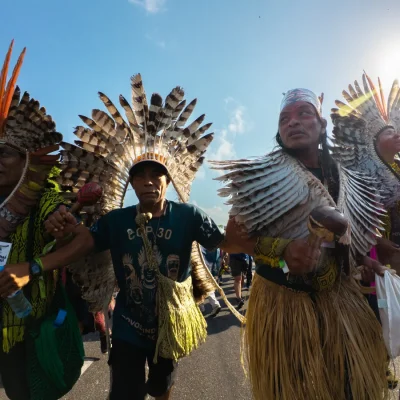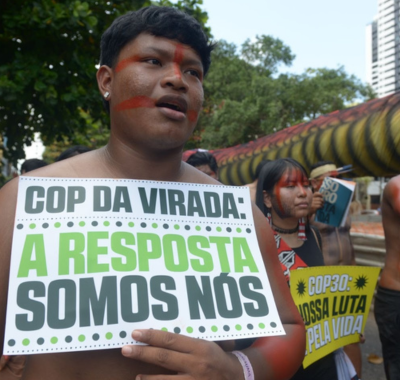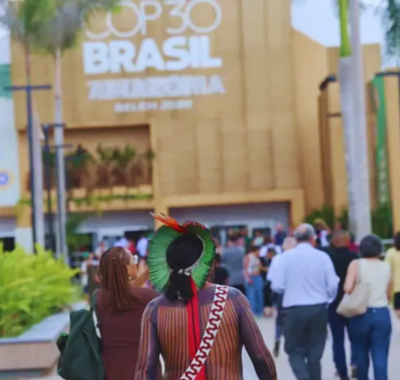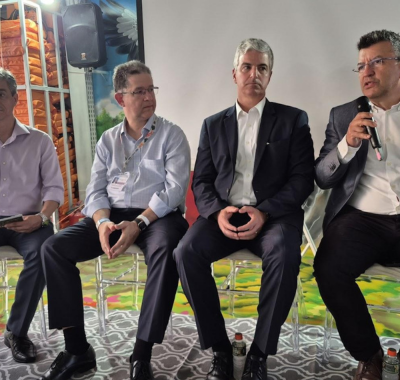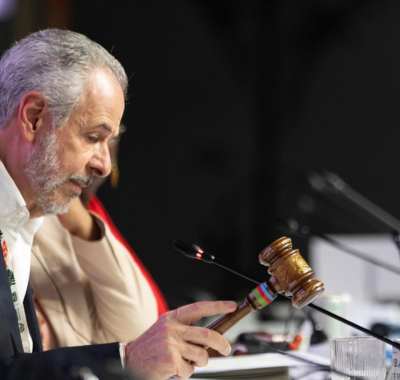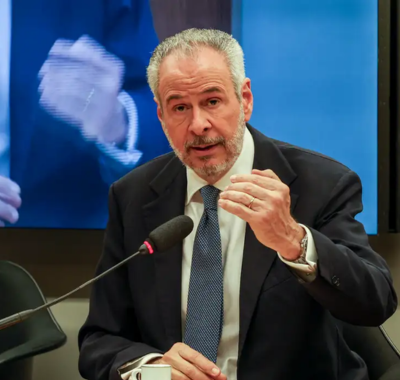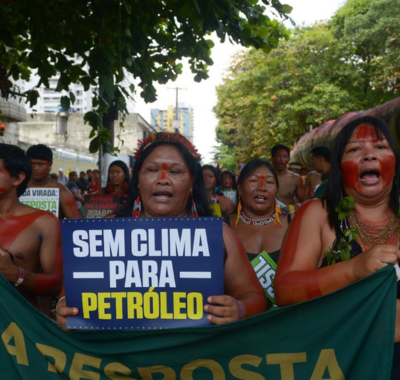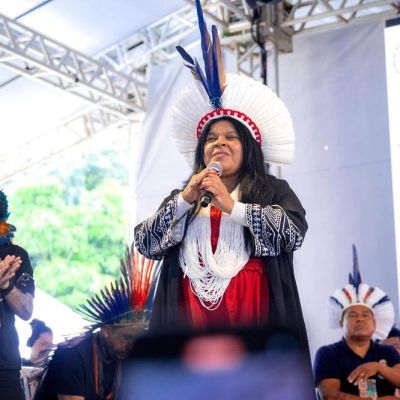Outside the closed negotiation spaces that limit popular participation, the Peoples’ Summit is a coalition of social movements and Indigenous Peoples taking place at the Federal University of Pará (UFPA) from November 12 to 16, with hundreds of participants expected to attend.
Text by Laura Guido. Edited by Carla Fischer
Translated by Diego Lopes/Verso Tradutores
A flotilla marks the start of the program for the main parallel debate space at the Conference of the Parties (COP30) this Wednesday (12), the Peoples’ Summit. The initiative seeks to amplify the voices of Indigenous Peoples, traditional communities, and rural workers who are experiencing the effects of the climate crisis and is expected to bring together more than 200 boats and around 5,000 people in Guajará Bay, in Belém.
Among the organizations involved is the Coordination of Indigenous Organizations of the Brazilian Amazon (Coiab). Dineva Kayabi, coordinator-treasurer of the entity, points out that this is the first time that Indigenous Peoples have had significant representation at COP. However, even with the event taking place in the Amazon, Indigenous presence at the negotiating tables is still limited. “This is a shame, because the world is missing out on the great contributions that Indigenous Peoples could offer, including strengthening Brazil’s role as a climate leader,” says Dineva.
Contrary to the official Blue Zone program at Parque da Cidade, the People’s Summit has established itself as a space for resistance and representation for organizations and movements that defend the sovereignty of peoples and the preservation of the Amazon. “Although we are not at the negotiating table, we have proposals and paths to climate justice, and that starts with the demarcation of our territories and direct financing,” concludes Dineva.
Pablo Neri, from the National Leadership of the Landless Workers Movement (MST), which mobilizes more than 1,500 activists from across the country, emphasizes that the goal is to discuss different structural areas of society based on popular participation. “Within the unity of more than 400 organizations that signed the manifesto in 2023, we are involved from the programming to the development of the work axes, divided into health, security, training, culture, and food,” he explains.
In addition to the main program, the movements are organizing a large camp with a capacity for more than 10,000 people. “During the People’s Summit, activists from all over Brazil will be camping, and the MST will participate with about 1,500 people,” adds Pablo.
After the flotilla and the arrival of the caravans, the program continues with a welcome in the afternoon and an official opening in the evening, with speeches by the organizations and a cultural agenda. In the following days, a Popular Fair will occupy the corridors of the Federal University of Pará (UFPA), along with discussion circles, debates, and the so-called Axes of Convergence, which delve deeper into themes collectively defined by the movements that drafted the manifesto.
One of the most eagerly awaited moments is the People’s Climate March on Saturday (15), which will march through the streets of Belém in defence of territories and for climate justice. COIAB is one of the central organizations in the construction of the Summit and represents the mobilization of Indigenous Peoples.
The complete program for the People’s Summit is available here.
About the People’s Summit
Also participating are the Zé Cláudio and Maria Institute (IZM) in Marabá, a leading advocate for human and environmental rights, as well as the Movement for Popular Sovereignty in Mining (MAM), the Movement of People Affected by Dams (MAB), and dozens of other quilombola and riverine groups and grassroots organizations that will participate in the debates at UFPA.
Preparations for the Peoples’ Summit began in 2023, after the Amazon Dialogues event, also held at UFPA, which preceded the Amazon Summit, a meeting of heads of state in Belém, two years before COP. At that time, it was collectively decided that the People’s Summit would be held in parallel with the climate conference.
The Summit’s manifesto is divided into four axes: Living Territories and Maritime Territories, Popular and Food Sovereignty; Historical Reparation, Combating Environmental Racism, False Solutions, and Corporate Power; Just, Popular, and Inclusive Transition; and Struggle Against Oppression, for Democracy and Internationalism of Peoples. These axes guide the debates and mobilizations of the coming days.
—
This report was produced by Amazônia Vox, through the Collaborative Socio-environmental Coverage of COP 30. Read the original report at: https://www.amazoniavox.com/noticias/view/467/paralelo_a_cop_cupula_dos_povos_reune_movimentos_sociais_e_de_indigenas_em_belem




